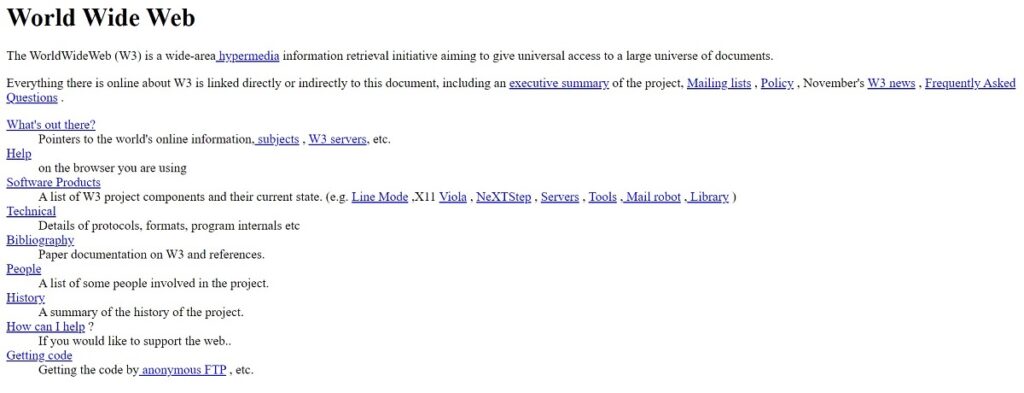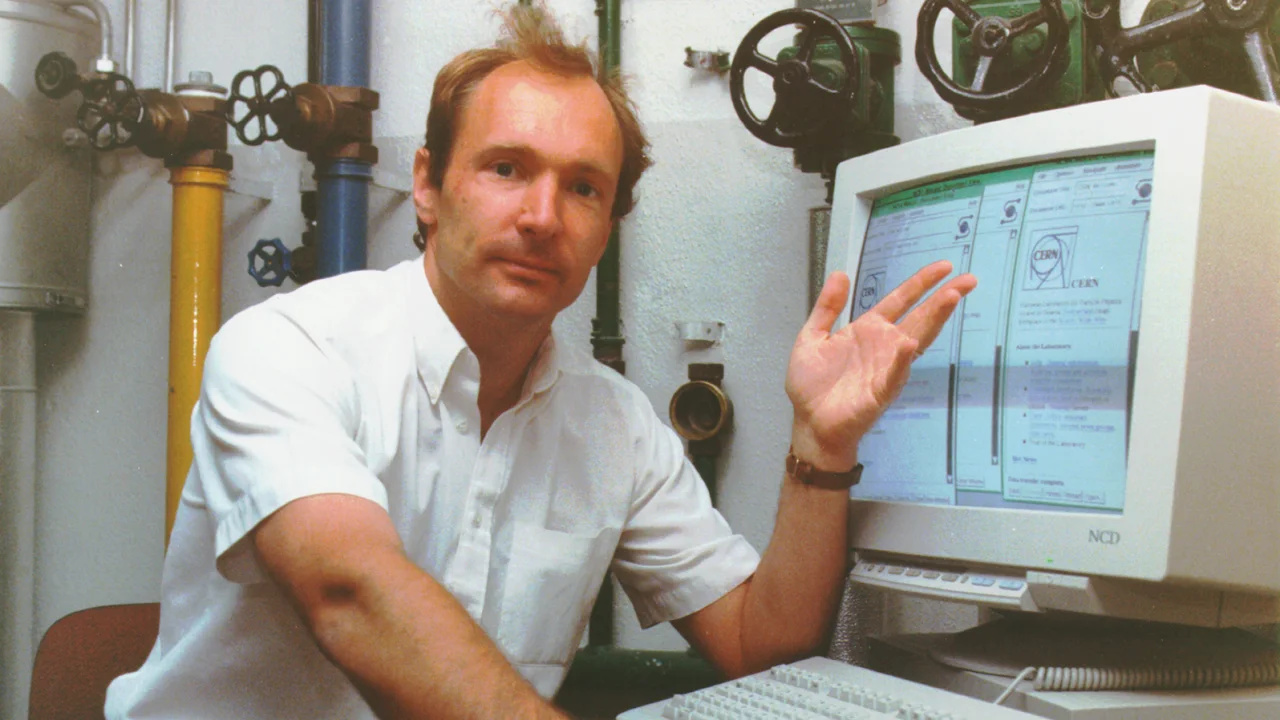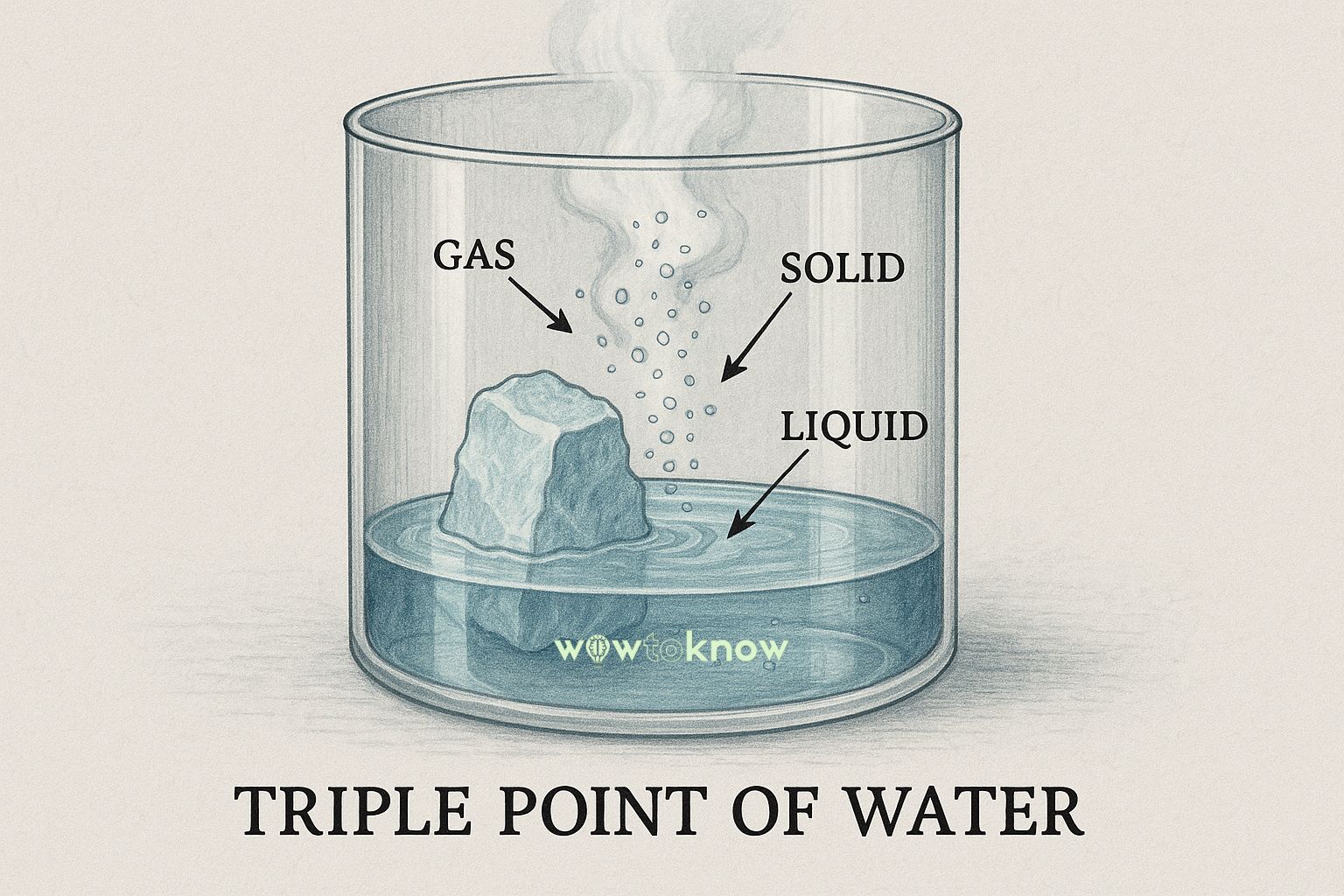82% out of over a billion websites existing today are inactive. Unlike them, the first website in the world is still alive and kicking. It was launched on August 6, 1991, by the World Wide Web inventor, Sir Tim Berners-Lee. The site is still accessible at its original URL.
Scroll down to see what it looks like and learn more about the first website ever created.
The Worldwide Revolution Begins
On August 6, 1991, the first website ever created went live. This momentous occasion laid the foundation for the internet as we know it today.
The mastermind behind the first website was Sir Tim Berners-Lee, a renowned British computer scientist. Born in London, England, in 1955, Timothy Berners-Lee had a vision to connect information globally and make it accessible to everyone. He believed that by developing a system that allowed information to be linked together, people could easily navigate through a vast sea of knowledge.
At the time, Berners-Lee was working in Switzerland at the European Organization for Nuclear Research (CERN). As a scientist, he was frustrated with the difficulties of sharing research information with colleagues around the world. Inspired by the concept of hypertext, he developed the World Wide Web as a way to facilitate information sharing on a global scale.
Before the creation of the World Wide Web, the internet existed primarily as a network for scientific and academic purposes. Berners-Lee’s vision was to democratize the internet and make it accessible to anyone with a computer and an internet connection. With the development of HTML (Hypertext Markup Language) and HTTP (Hypertext Transfer Protocol), he laid the groundwork for the web we use today.
What Did the First Website Look Like?
You can check it out anytime as the first web page on the internet is still available at its original URL: http://info.cern.ch/hypertext/WWW/TheProject.html

The site was simple by today’s standards, yet it was a significant step forward in the digital realm. It contained text-based information about the World Wide Web project, including its purpose, how to create web pages, and where to find web-related resources.
The website’s design reflected the simplicity of the early web, with minimal graphics and a focus on text-based content.
Visiting the site’s original URL today, you can catch a glimpse of internet history firsthand. The website’s layout is straightforward, displaying headings, paragraphs, and links to other resources.
It may seem rudimentary compared to the visually rich websites of today. Yet, this unassuming page represents the birth of a technological revolution that has changed the way we access information, communicate with each other, and interact with the world.
The Legacy of the First Website
The impact of the first website cannot be overstated. It set the stage for a global digital revolution, enabling the exchange of information, fostering collaboration, and transforming various aspects of society, including education, business, and entertainment. The world’s first website paved the way for the interconnected world we live in today.
Following the launch of the first website, the World Wide Web grew exponentially. By the mid-1990s, individuals, businesses, and organizations around the world began creating their websites, expanding the web’s reach and potential. The simplicity and universality of the web’s underlying technologies, such as HTML and HTTP, made it accessible to people with diverse technical backgrounds.
In the years that followed, advancements in web design, web development tools, and internet infrastructure further propelled the web’s growth. Rich media, interactive elements, and dynamic web pages became increasingly prevalent. Websites became more visually appealing and functional, offering new opportunities for e-commerce, social networking, and multimedia content.
Today, there are over a billion websites on the web. We use them for communication, research, entertainment, shopping, and much more. The World Wide Web has become a vast repository of human knowledge, connecting individuals and communities across geographical boundaries. It has democratized information access, giving a voice to marginalized groups and promoting global collaboration.
As the web continues to evolve, new technologies and trends shape its future. Mobile devices and responsive design have made the web accessible on the go, while artificial intelligence and machine learning have transformed the way we interact with websites and services. The web’s potential for innovation and positive impact remains boundless.
FAQ
What Was the First Website on the Internet?
The first-ever website was all about the World Wide Web project itself. It provided information on what it was, how to create web pages, and where to find web-related resources. This first web page is still up and running, you can check it out at its original URL: http://info.cern.ch/hypertext/WWW/TheProject.html
When Was the First Website Created?
The first website on the internet was launched on August 6, 1991. A momentous occasion that set the wheels in motion for the internet to become the powerful force it is today.
Who Created the First Website?
The mastermind behind the first website was the legendary World Wide Web creator, Sir Tim Berners-Lee.








Nice
[…] It took over 10 years for Motorola to finally release the first commercially available cellphone in 1984 (by the way, it was just seven years before the world’s first website went live). […]